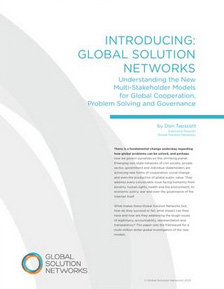Last week’s fraud charges against Goldman Sachs were a wake-up call that trouble still lies ahead for Wall Street. With the global economy remaining stalled, the deepening jobs crisis, a looming commercial real-estate meltdown and other storm warnings of systemic problems, a wave of books dissects this greed-induced mess. Among the best are The Big Short: Inside the Doomsday Machine, Michael Lewis’s gripping blockbuster of how some smart people benefited from anticipating the implosion; Too Big to Fail, Andrew Sorkin’s meticulous detailing of the crisis’s events and players; and The End of Wall Street, Roger Lowenstein’s brutal blow-by-blow account of collapse.
Now, a new crop goes beyond these to analyze what went wrong, what were the underlying causes of the crisis and what should be done. The common conclusion is that the worst of the financial crisis may be over, but for business and government leaders the toughest days lie ahead. To save capitalism, we need to make some fundamental changes.
Who would have imagined three years ago that, in 2010, the central discussion among business and government leaders would be how to save capitalism?
Two books offer surprising and radical perspectives
The first is The Crisis of Capitalist Democracy, by Richard A. Posner, the prolific author and U.S. Court of Appeals Judge. (Harvard University Press, 402 pages, $29.95)
Until recently, Posner was one of the free market’s most articulate proponents. He contributed greatly to the anti-regulation perspective that shaped public policy for the past three decades.
Posner now confesses that he and the so-called Chicago School believed erroneously that “markets were perfect, which is to say self-regulating, and government regulation in them almost always made things worse.” But the crisis shows that pure market competition can cause people to take reckless and irrational risks, with short-term profit-maximizing behaviour jeopardizing society’s long-term interests.
I suppose it’s a step forward to acknowledge that markets, left to their own devices, will result in disaster. But it’s hardly a revelation.
Posner foreshadowed his change of thinking in the Sept. 23, 2009, issue of the New Republic, with How I Became a Keynesian. In the book, he expands his argument and makes a compelling case that liberal icon John Maynard Keynes was right when he argued that governments need to play a strong role in the economy, particularly in stimulating demand during recessionary times.
In this dense tome, Posner presents well-argued suggestions for change and offers fresh thinking about the business cycle, building on Keynes’s theories. Like many critics, including former Federal Reserve chairman Paul Volcker, he would reinstitute the Depression-era Glass-Steagall Act, which was repealed in 1999. It separated risky investment banking from commercial banking. He also savages the three bank-funded bond agencies that rated worthless financial instruments as AAA, arguing they should lose their semi-official status.
He serves up the dismal science of economics on a skewer, a popular pastime these days. Some economists defend themselves by saying their job is not to predict the future. Posner rebuts that economists didn’t do bad forecasting; they were “oblivious to danger.”
But, in the end, he offers little confidence that this crisis is over, let alone that its causes are fixable. He believes that polarized U.S. democratic institutions cannot rise to the challenge, lobbyists have near-complete control of government, and the prevailing belief that low taxes and appropriate public spending are both possible is foolhardy. We should expect waves of aftershocks resulting from rising public debt, including currency deflation, severe inflation and continued turmoil or worse.
The second book is The Road from Ruin: How to Revive Capitalism and Put America Back on Top, by Matthew Bishop and Michael Green (Crown, 373 pages, $32). For Bishop and Green, capitalism as we knew it ended on Sept. 15, 2008, the day Paulson made the grave error of letting investment bank Lehman Brothers fail.
Like Posner, they propose sweeping changes to the capitalist system, which is a bit surprising coming from editors of the centre-right, pro-business Economist magazine: “If the biggest mistake we could make after the crisis would be to abandon capitalism, the second-biggest mistake would be to assume that capitalism does not need to change.”
The book is a delightful and stimulating read by two of today’s best business writers. Throughout, they take insightful deep dives into the history of capitalism, from the 1720 credit crunch in England to today, showing how the system has been built on constant crises. With a fresh view that is hard to categorize, they dismiss free-market fundamentalists such as Ayn Rand or Arthur Laffer, along with left-wing advocates who argue that markets can do no good.
They conclude there are five mistakes we must avoid making: Believing that bubbles are wholly negative; that governments should avoid bailing out the financial sector; that crises can be solved without addressing underlying economic causes; that an economy will always naturally recover on its own after a crisis; and that the solution is simply a rush to more regulation of financial markets.
Where Posner decries the reckless innovation in financial instruments that caused the crisis, Bishop and Green applaud the spirit of creativity. The predictable bubbles and crashes that result are part of a learning process, and we shouldn’t, warn the authors, throw out the innovation baby with the recklessness bathwater.
In addition to the wonderful review of economic history, the book is strongest when it presents four big ideas to shape this new and improved capitalism: Rethink economics; redesign global governance; put values back into business; and promote financial literacy. They advocate replacing the dollar with a new world currency, and for a new set of business values, blaming the crisis on “toxic ideas” rather than “toxic assets.”
Dissenting from Posner, they say that reinstating a new Glass-Steagall act would undermine U.S. banks’ international competitiveness. The authors might gain evidence for this view from the Canadian experience. Our banks avoided the risky and unethical behaviour of their U.S. counterparts, even though there is no Glass-Steagall-style imposed separation.
Bishop and Green, like Posner, stop short of laying out a comprehensive blueprint for change. However, clearly we’re in early days of this debate and enormous change lies ahead. By painting a rich historical tapestry and providing startling insights into how economics needs to recognize the complexity of human behaviour, they have made a powerful contribution to get us off a road that is indeed surely ruinous.





